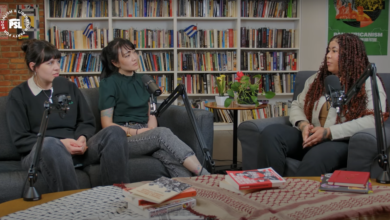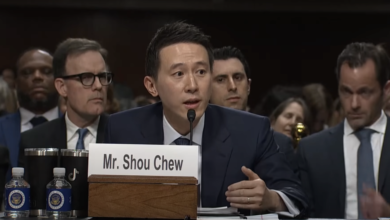Oct. 7 marked the 12th anniversary of the U.S. invasion of Afghanistan as the occupation entered its 13th year. “Operation Enduring Freedom” has certainly endured, but it has brought not freedom but occupation and misery to the Afghan people.
That the anniversary has received almost no media attention can be attributed in part to the crisis in Washington, D.C., with the government shutdown and the upcoming debt ceiling deadline. However, even prior to the current crisis in Washington, the occupation of Afghanistan was attracting little media attention. It is as if the U.S. government is exercising its “right” to occupy Afghanistan, irrespective of the immense suffering of its people.
Afghanistan is currently occupied by 87,000 foreign troops—52,000 from the United States and 35,000 from its junior partners. Despite years of talk about troop reduction and a drawdown, the number of U.S. troops is still higher now than at any point in the first seven years of the occupation. In fact, it was President Barack Obama, elected on somewhat of an anti-war platform, who surged the number of U.S. troops shortly after taking office in 2009.
Occupation atrocities
Over these years, the U.S. occupiers have carried out unimaginable atrocities, from bombing village weddings to mowing down children playing in the fields. But there are no reliable estimates of the number of Afghan people killed in the 12 years of occupation, nor of the indirect casualties caused by the widespread destruction and a nearly non-existent public welfare infrastructure.
The occupation has also taken the lives of 3,372 occupation troops, 2,144 of them U.S. military personnel, over 73 percent of which have come under the Obama presidency. In the first 10 months of 2013, at least 106 U.S. troops were killed.
As high as the U.S. casualties are, these only show part of the picture. By taking the roles of supporters and trainers, Washington has managed to get Afghan forces to absorb most of the casualties. According to U.S. Gen. Joseph Dunford, the NATO commander in Afghanistan, casualties among the Afghan forces allied with the occupation forces are often reaching 100 per week. That comes to about 5,000 per year. In a poor country with a severely depressed economy, working for the police and the military is one of the few career options available to young Afghan men, precisely the same reason youth in the U.S. join the military.
The Obama administration has announced plans to reduce the number of troops to 31,000 by February 2014. December 2014 is the projected date of the U.S. withdrawal of all its forces from Afghanistan. But there are already negotiations about authorizing the stay of some numbers of troops beyond that date.
Elections
Oct. 5 was the deadline for the registration of candidates for next year’s elections. Twenty-seven presidential candidates have registered for the elections, scheduled for April 5, 2014. But elections under occupation do not provide the possibility for the Afghan people to make real change.
The last elections in 2009 fell far short of even the appearance of legitimacy. It was first announced that Hamid Karzai, the incumbent president, had received over 50 percent of the vote, hence no need for a second round. In response to evidence of widespread fraud, the election commission reduced Karzai’s votes to less than 50 percent to force a runoff, hoping to salvage some legitimacy. But Abdullah Abdullah, the second highest vote getter, refused to participate in a show runoff, citing certainty that the second round would be as marred by fraud as the first. Then, the elections were hastily canceled and Karzai declared the winner, his less than 50 percent of the vote notwithstanding.
Even if “clean” elections are held, elections under occupation cannot possibly be the foundation for true democracy, rule of the people. The U.S. spreads the propaganda that it is teaching and training Afghans in democracy—it is a long and difficult process, the propaganda goes, because Afghans have never experienced democracy. The fact is that it was the U. S. government that destroyed the people’s democracy that Afghanistan had once achieved.
The Saur Revolution
In April 1979, a progressive government took power in Afghanistan in what was known as the Saur Revolution. Under the leadership of the People’s Democratic Party of Afghanistan, the government implemented a democratic program that included land reform, growth in public services, price controls, separation of religious institutions and the state, full equality for women, legalization of trade unions, and a sweeping literacy campaign.
Under U.S. President Jimmy Carter, the CIA launched a massive campaign, organizing and arming the militias of the landlords to overthrow the state. In reaction to U.S. intervention, the Afghan government requested the Soviet Union’s military assistance.
But the Mujahideen, the reactionary force organized by the United States, eventually overthrew the progressive Afghan state years after the Soviets had withdrawn. Afghanistan then descended into a bloody civil war between the rival factions of the reactionary militias. This in turn led to the ascent of the Taliban, who were eventually overthrown by the 2001 U.S. invasion.
Afghanistan today has no immediate possibility of true democracy, because the only democracy it has known was destroyed by the United States. For the Afghan people to have any possibility of a people’s democracy, and the betterment of their life conditions, the first prerequisite is the withdrawal of all foreign troops, U.S. and its junior partners. Then the people of Afghanistan would be entitled to receive significant reparations to rebuild infrastructure that was destroyed by the
12 years of U.S. occupation and the civil war before that, which was the direct result of U.S. intervention.
The tragedy that has befallen Afghanistan is one of the most criminal chapters in the history of U.S. imperialism. U.S. intervention has caused the destruction of Afghanistan. It cannot be part of the rebuilding. U.S. Out of Afghanistan Now!





